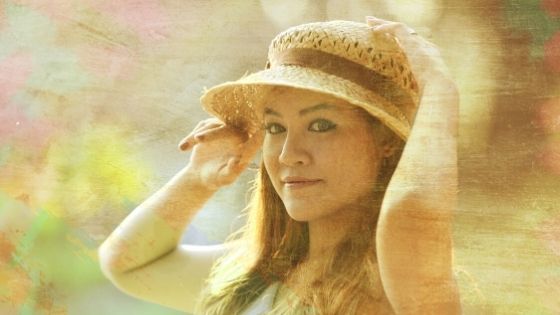Painting a portrait is quite intimidating and doing a portrait in watercolor is even more so challenging. But if you do it with the right techniques and most importantly with patience, a watercolor portrait painting can be an incredibly satisfying project.


Doing anything in watercolor requires a little planning and lots of perseverance. It helps you map out all the basics and establish your composition. So, whether you are working from a photograph or from life, knowing how much of your subject you will be painting in watercolor makes things much easier.
With this background, let’s get you started with the top tips on watercolor portrait paintings.
● Do not aim for a perfect likeness
Don’t heap a lot of expectations upon yourselves if you are new to painting faces. Instead, make your task of painting much more approachable by aiming for a recognizably human face rather than a perfect likeness of the person.
A good likeness of the subject is very achievable with lots of practice and observation. The construction technique of faces is basically the same — the two eyes, a nose, and mouth, always drawn in the same order and place. But, what makes you different is the detailing of tiny nuances in particular shape and placement of each of those features.
You can begin by drawing your subject lightly in a hard pencil, such as 4H. Be very mindful of the dark and light shapes and gradually works towards creating the exact human face.
So, avoid feeling daunted, try to be kind to yourself, and moderate your expectations!
● Understand the basic proportions
Every human face is basically the same, having the same features in just about the same place. So one of the most helpful things that you can do for yourself is to sit back, take some time to observe and learn those basic proportions.
Once you get comfortable with knowing the accurate placement of the features and how they line up with each other and size them relative to each other, the easier it becomes to draw a portrait. Though, the features will always appear to be pretty much where you expect them to be, it’s just that in the beginning, that many artists tend to make assumptions about their placement, rather than carefully observing what is actually there.
Here’s an example to help you understand better— most beginners tend to place the eyes in the top section of the face assuming that’s where it belongs. But, in actuality, the eyes are positioned halfway down the face. The placement and proportion of facial features play a key role in portrait paintings.
● Begin with a front-facing face
Looking in the mirror, or at a few photographs, you will be able to understand those proportions for yourself. It is only when the face is facing directly forward, it is easier to comprehend the right placement and proportion of the features.
As soon as the head moves up or down or a little either right or left, those proportions appear to change. For example, when a head is turned to the side, the imaginary central vertical line between the eyes appears to have shifted to one side and no longer appears to be in the center of the head. The side of the face that is further from the viewer also seems smaller in width than the side of the face that is closer. Similarly, when the head is moved up the imaginary horizontal line, on which the eyes sit, is now in the top section of the face rather than the middle.
Though with practice, you will be able to draw these ¾ profiles and turned heads, but while starting out, choose to paint a front-facing one that is looking directly at the viewer.
● Try to work small
For beginners, it is always better to work small. It does not mean business card small (that has its own different set of challenges), but a manageable sort of 5”x7” or 6”x8” or something of A5 size.
Also, try to get your reference image to be roughly the same size as your painting. So if you are printing out your reference photograph, make sure to scale it down to match your painting size. If you are working with the digital version of your reference image on your device (which is always a better idea), then you can always pinch and zoom it to get the exact size you need.
When the reference photo of the same size as your watercolor portrait painting, it is much easier for you to draw the proportions more accurately.
● Sketch a basic loose outline
Always go for a loose, lively energetic or a slightly wonky portrait drawing than a torturously uptight and strained one. More importantly, it is with a gentle hand and a light heart that you will be able to enjoy drawing enough to practice it more and more.
For beginners, it is good to use a pencil or an erasable colored pencil and starting out with loose light lines of the portrait. Don’t worry about erasing every mark instantly, that you think better of and redo. Any extra marks can be erased just before you start painting. In fact, make them light, and feel your way into the best version of the line that you are trying to draw.
For example, don’t try and draw the perfect oval shape for the face first time around. Draw many light ovals continuously over each other and the best one reveals will itself and you can erase the others.
● Look for values
Don’t worry too much about trying to paint the exact skin tone that you see in your subject. Instead, focus on working on the values right — the dark and light passages in the reference.
The best way to capture the right values is to close your eyes halfway or even more if you are comfortable. Doing so will reduce the amount of information you can take, the color would no longer visible but only dark and light shapes. If you can put these dark and light sections on your subject in roughly the right places then your face will have the right dimension and come to life.
Also, don’t be afraid to put in unlikely colors that are not typical skin tones of humans. You can create a fun and effective contemporary portrait with pops of greens, blues, and purples in the face. As long as the value is right, you can get away with pretty much any color.
● Work from light to dark
Since you are working in watercolor, remember that you can’t paint light colors over the top of dark ones. Since watercolor is transparent the underneath layers will show through so, it is best to work from light to dark.
Adopt a loose approach and welcome the odd happy accident in your watercolor painting. Usually, you can blot away a mark if the paint is still wet, or use the lifting technique to put a light area back in if you need to.
● Avoid adding hard lines
The human face has a very few hard lines. Since we are flesh-covered beings most lines such as wrinkles or edges are quite soft.
While adding lines to the face you always run the risk of making your subject look aged, even if they are pretty young. If you see a line that you think is important, add it in lightly (probably in a light color) and ensure to soften the edges of the mark with a clean damp brush.
Generally, loose wet on wet techniques are quite helpful in capturing the softness of a face, you can always try and see if it works for you.
If in doubt about the lines, simply leave them out.
● Remember less is more
The human face is a very complex thing — so many muscles under the skin in varying proportions, so many different parts working together. Don’t let this overwhelm you even a bit. In fact, try to forget all that and just focus on the big shapes of the face.
Recall the very first point we started out with, aim for an impression of a person, not a perfect likeness. So, don’t try to draw every eyelash and freckle, but stick to the big shapes and features.
Always remember, when it comes to quick watercolor portrait paintings, less is definitely more!
● Give yourself a time limit
It will be really helpful especially for beginners if you give yourself a time limit while painting with watercolor. In fact, it is also an excellent way to prevent yourself from overthinking about your art and being too critical of yourself.
While painting, there also comes a point when the marks you add to the portrait make it worse, and not better. Ideally, you would want to stop before that happens. If you have the slightest feeling that your work might be finished, you probably are, put your brushes down. If you still continue, you risk losing the fresh lively quality of a loose watercolor and end up overworking them.
Final Words
In the beginning, keep your goal simpler and work on lots of quick little portraits. And most importantly, have lots of fun doing it. It will eventually be visible in your portrait painting!









